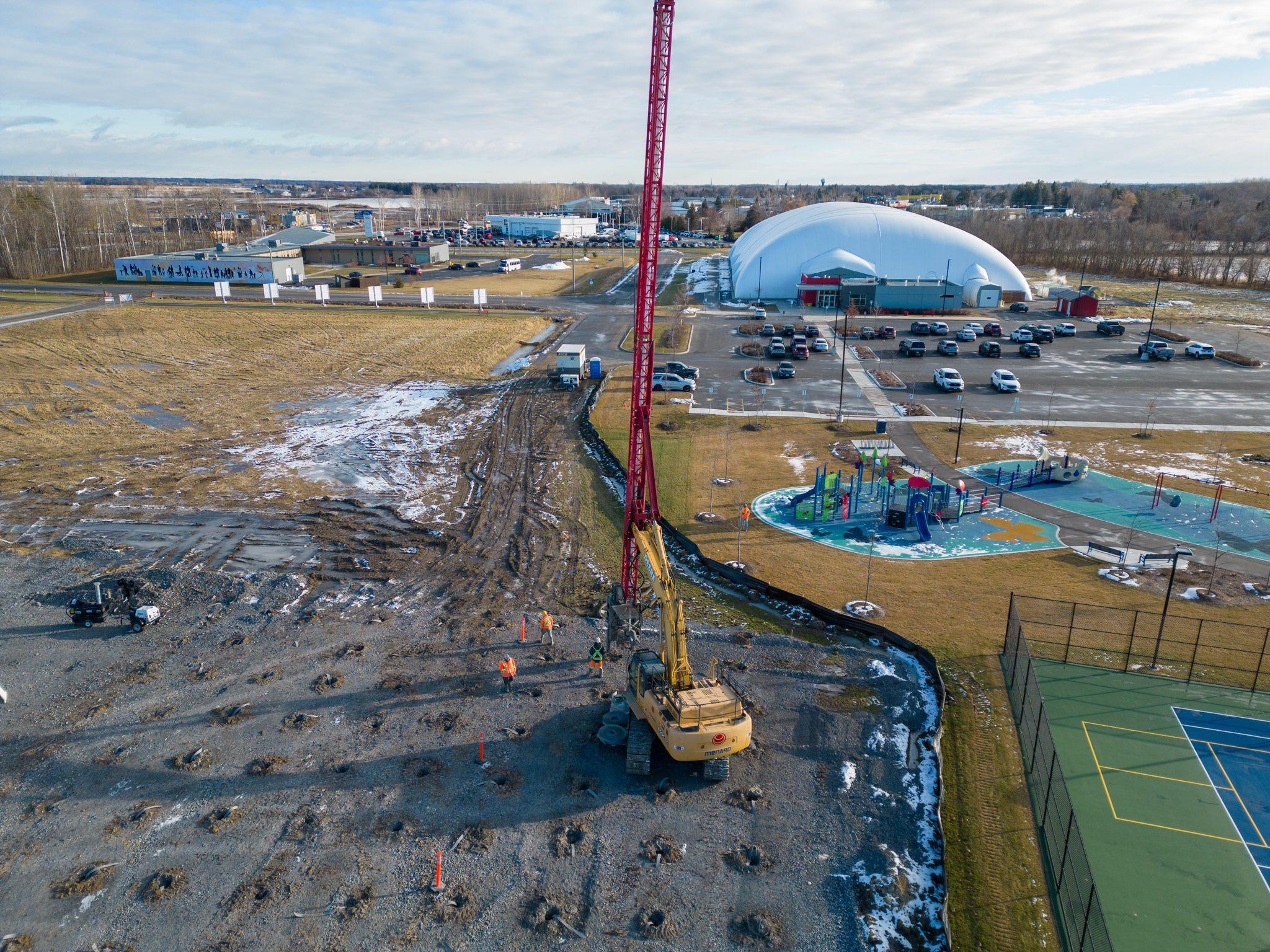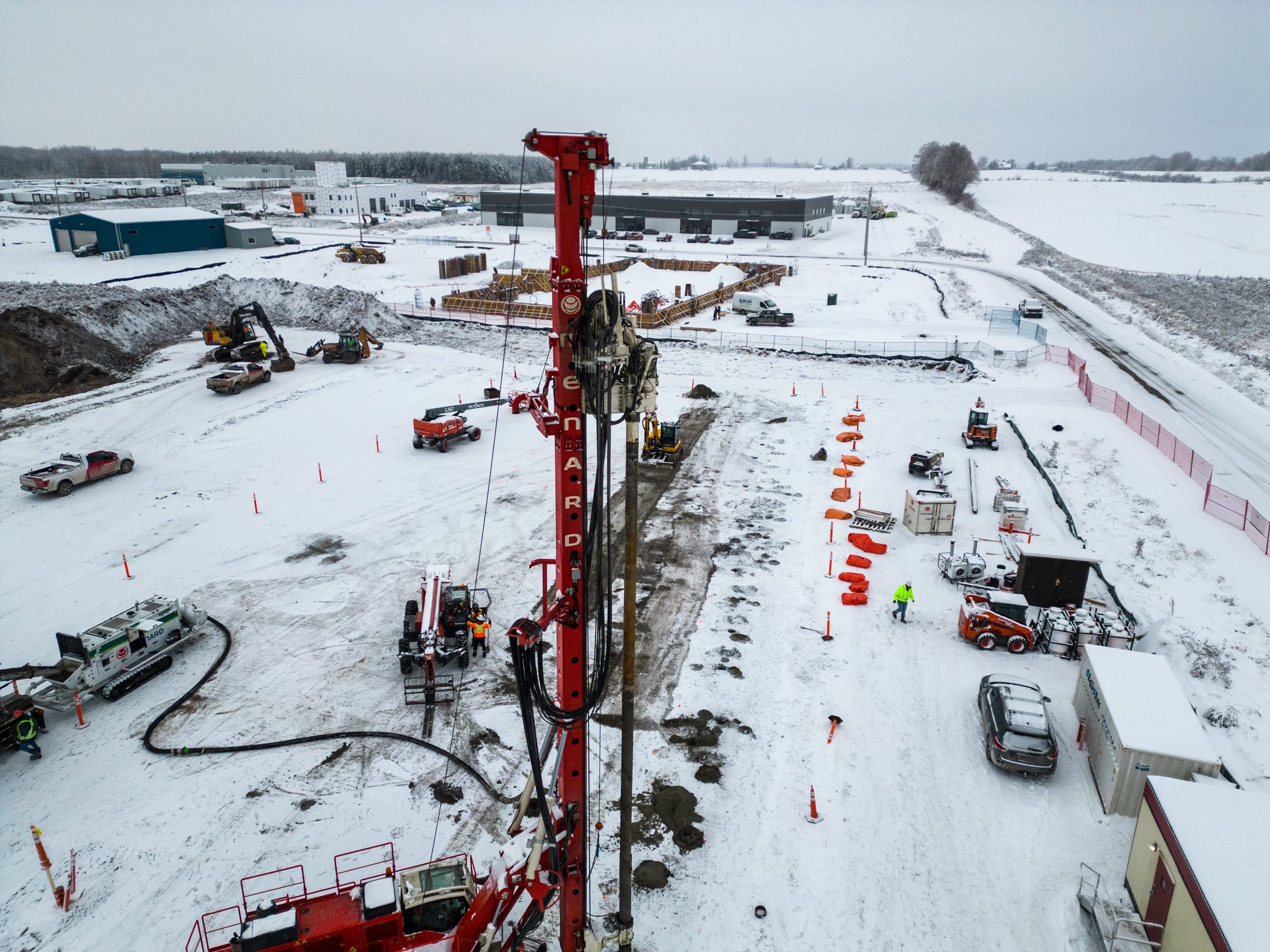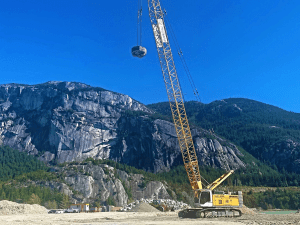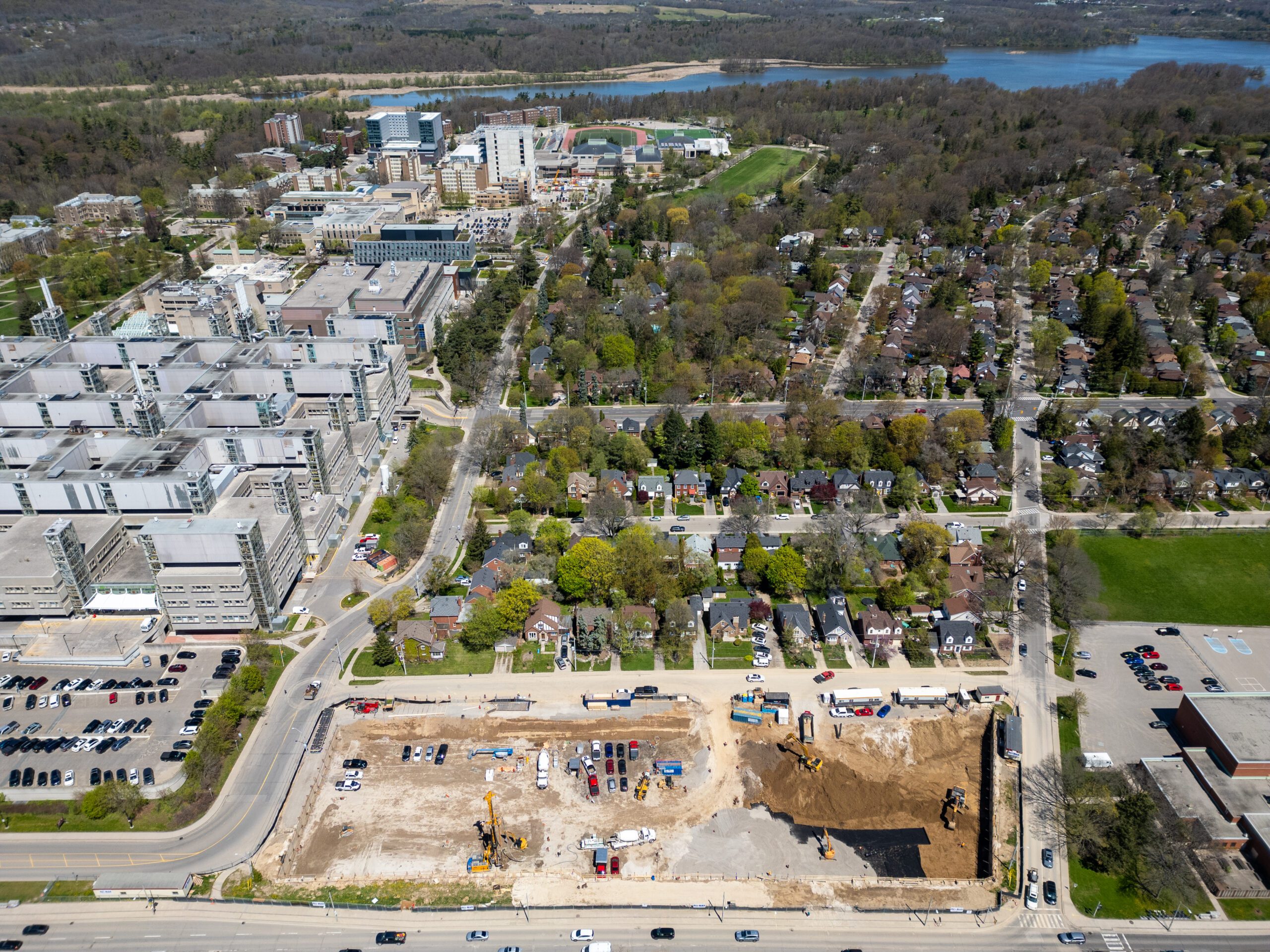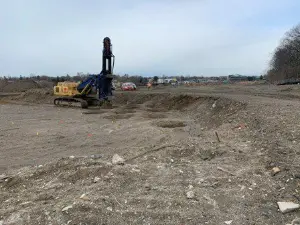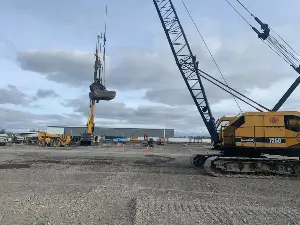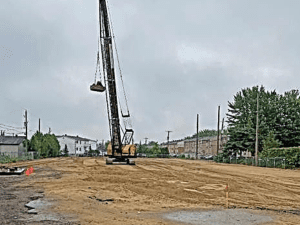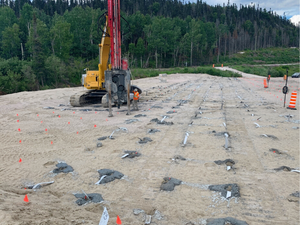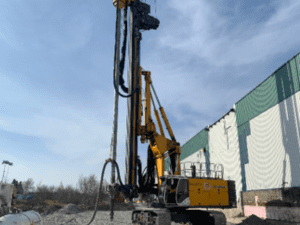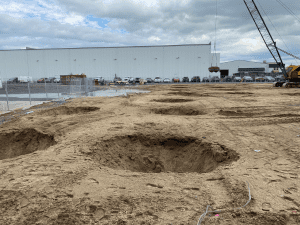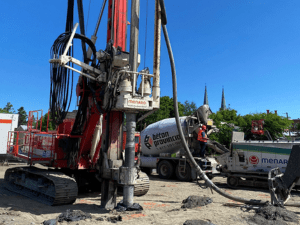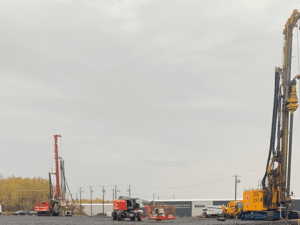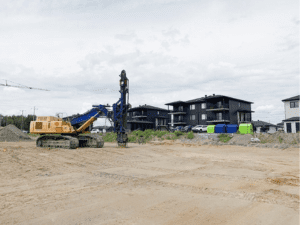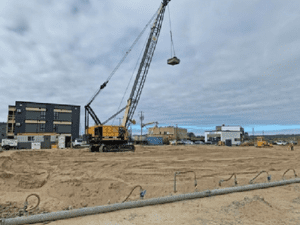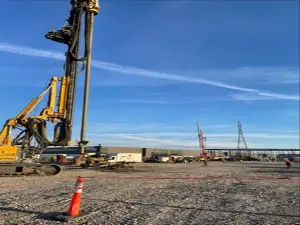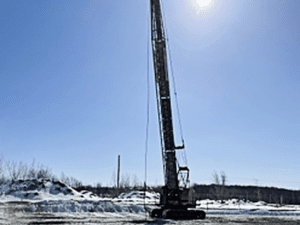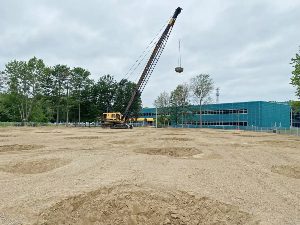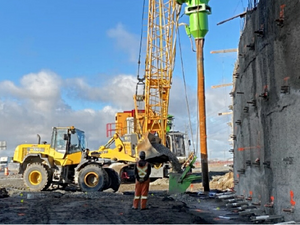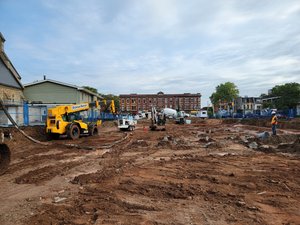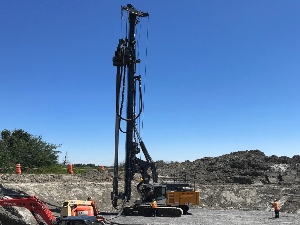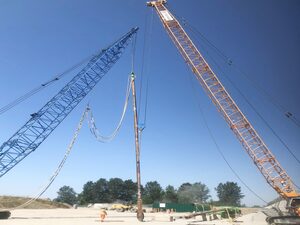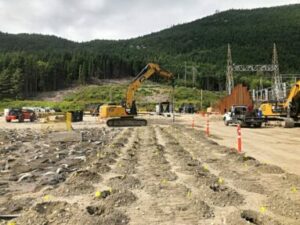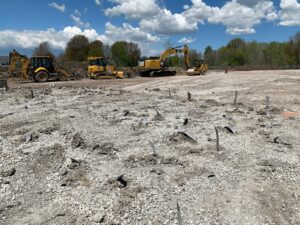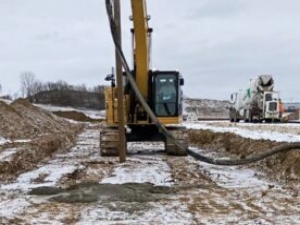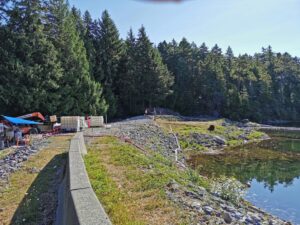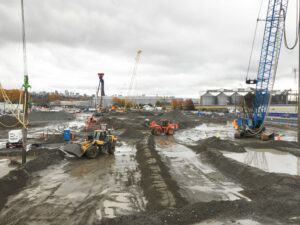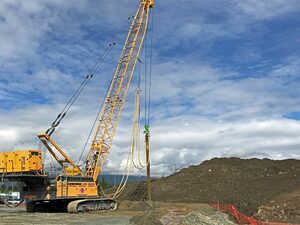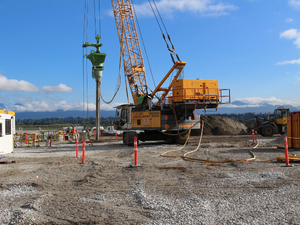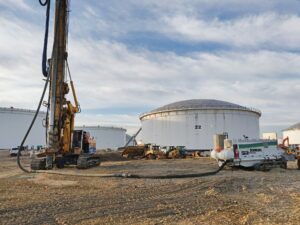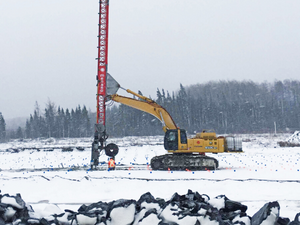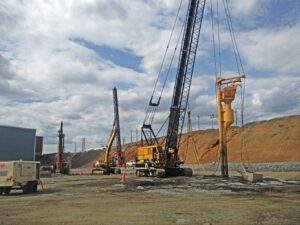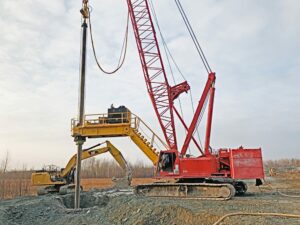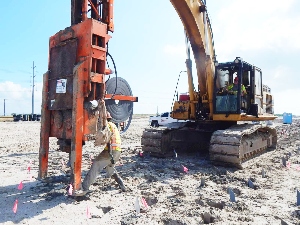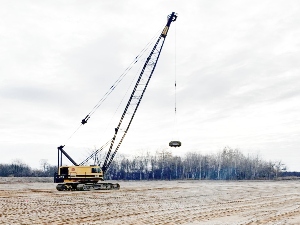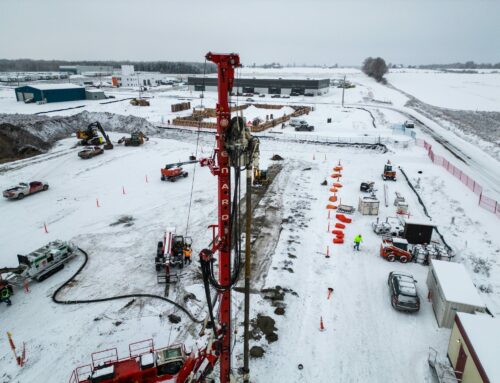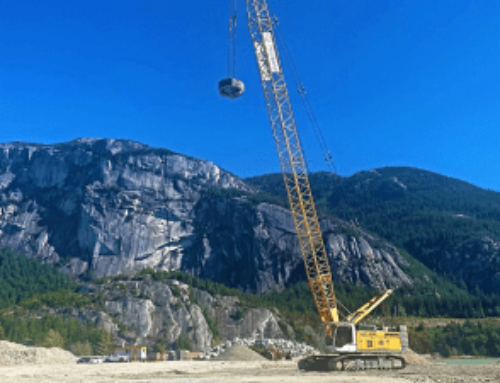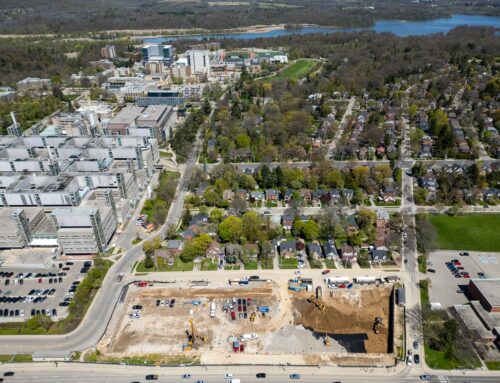Selected Technique:
Dynamic Compaction
Treatment Area:
6159m²
Nouvel commissioned Menard Canada to improve the soil of the foundations and the slab of the future seniors’ home at 140 av du Pont N in Alma (Quebec). The area of the future buildings is 6239m2, including an overflow of 3m.
Ground Conditions
The geotechnical data extracted from the report “1974-04_Geotechnical study report New building, 140 ave. du Pont, Alma” (NVIRA, August 2020) based on boreholes F1 to F6 and exploratory trenches TE1 to TE4 indicate the following soil profile:
- A layer of topsoil with a thickness of 0.05 m to 0.2 m.
- A pavement structure with a thickness of 0.2 to 1.3 m depth mainly made up of bitumen on the surface and then granular materials below (sand and gravel with traces of silt)
- A heterogeneous backfill comprised of sand, gravel and silt of very loose to medium compactness over a thickness of 0.41 to 4.47 m. Plant matter, wood and blocks were found in this layer.
- The natural soil beyond is composed of sand with traces of sand silt and silt with the presence of pebbles and blocks. Its compactness varies from very loose to compact over a thickness of 2.1 to 5.7 m.
- The natural glacial till below was composed of silty and gravelly sand of dense to very dense compactness.
- Rock is encountered 27.4 m below the surface.
The land surface was measured at elevations varying between EL. 102.22m and 108.78m. The natural ground surface was measured at elevations ranging between EL. 97.65m and 107.57m. The groundwater level was measured on June 15, July 21, and July 23 at elevations between 97.63 m and 104.03 m, or between 0.91 m and 4.59 m depth from the surface.
Menard Canada Solution
Menard Canada carried out the Dynamic Compaction using a conventional crane to densify the granular soils to a thickness of 5.5 meters. Treated soils will meet the following performance criteria:
- A bearing capacity of 250 kPa for isolated footings and strip footings.
- Total and differential settlements not exceeding 25 and 19 mm, respectively, under these loads.
The three (3) boreholes with pressuremeter tests, the two (2) piezometric sensors and the associated calculations showed that the criteria were met.


